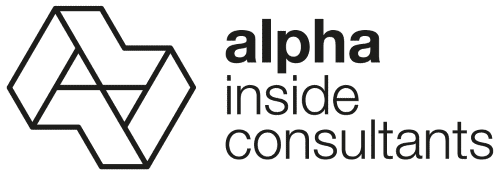Less is more - the new net-zero company building of Alpha IC GmbH
We will soon be moving into our sustainable working environment in the new company headquarters on the Bamberg Lagarde Campus. The special thing about the three-storey office building with a total gross floor area of 2,079 m² is not just the frugal “less is more” concept. There are other exciting aspects that make this pilot project for sustainable construction special. For example, the partnership-based cooperation between the client and general contractor, Zech Bau SE, as part of the “Guaranteed Maximum Price” (GMP) construction contract model. The development of a gross rental concept or the conscious selection of suppliers with regional added value, short delivery routes or recycled products in their range. Above all, the central objective is to realize a house without stationary heating with a net zero balance in operation thanks to an in-roof PV system. The central premise in the planning was therefore “efficiency first” and “less is more”. The result is an efficiency building 40 (NH class) based on passive house standards. The client is our managing partner, Sebastian Hölzlein, for whom it is fundamentally important that the building consumes and emits as few resources and CO2 as possible over its entire life cycle. Translated with DeepL.com (free version) Less is more - the new net-zero company building of Alpha IC GmbH We will soon be moving into our sustainable working environment in the new company headquarters on the Bamberg Lagarde Campus. The special thing about the three-storey office building with a total gross floor area of 2,079 m² is not just the frugal “less is more” concept. There are other exciting aspects that make this pilot project for sustainable construction special. For example, the partnership-based cooperation between the client and general contractor, Zech Bau SE, as part of the “Guaranteed Maximum Price” (GMP) construction contract model. The development of a gross rental concept or the conscious selection of suppliers with regional added value, short delivery routes or recycled products in their range. Above all, the central objective is to realize a house without stationary heating with a net zero balance in operation thanks to an in-roof PV system. The central premise in the planning was therefore “efficiency first” and “less is more”. The result is an efficiency building 40 (NH class) based on passive house standards. The client is our managing partner, Sebastian Hölzlein, for whom it is fundamentally important that the building consumes and emits as few resources and CO2 as possible over its entire life cycle.
Some of the key sustainability aspects of the RESI as an innovative concept are outlined below:
- Results from the GEG balancing: Final energy (here electricity): approx. 24,400 kWh/a -> 1,220 TWh over 50 years
- Results from the GEG balancing: CO2 emissions: approx. 11,600 kg/a -> 580 t CO2 over 50 years
- Use of RC concrete and RC gravel as well as Re-use clinkers as a contribution to the circular economy
- In-roof PV system with a net-zero balance in operation over the course of the year
- The RESI achieves 100 out of 100 points in the life cycle assessment.
- In the life cycle assessment according to the QNG calculation rules, the project-specific requirement values are determined based on the reference building method (GEG); these requirements (primary energy demand and global warming potential) are undercut by approx. 5% as of March 24
- Material ecology according to DGNB levels reaches quality level 3
- Sustainability certification (AIC):
- DGNB Gold certification is the realistic goal for RESI
- QNG: the minimum target is to achieve a QNG PLUS seal
- GEG (promotion according to the Federal Promotion of Efficient Buildings BEG ES40 NH): the requirements of the Building Energy Act are undercut by approx. 15%: we achieve an efficiency building 40, the minimum requirement according to GEG is an “efficiency building 55”
We would like to use the RESI to motivate and inspire others to follow suit, because in doing so we can all
o make a contribution to achieving climate neutrality
o can serve as a role model and motivate other SMEs to follow suit
o contribute to the transformation of the real estate sector
o advocate space and social sharing as part of the frugal building and operating concept
o can make an innovative contribution to the design of a (new) neighborhood



